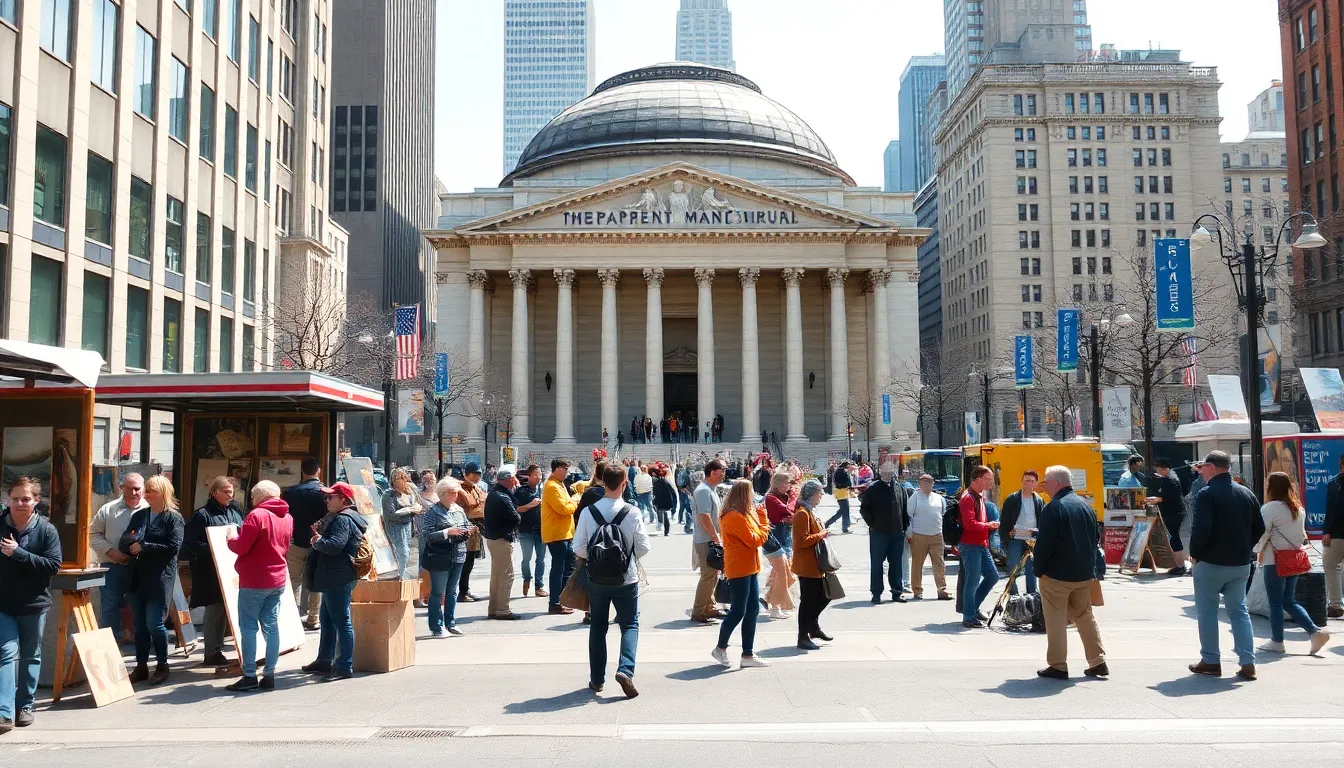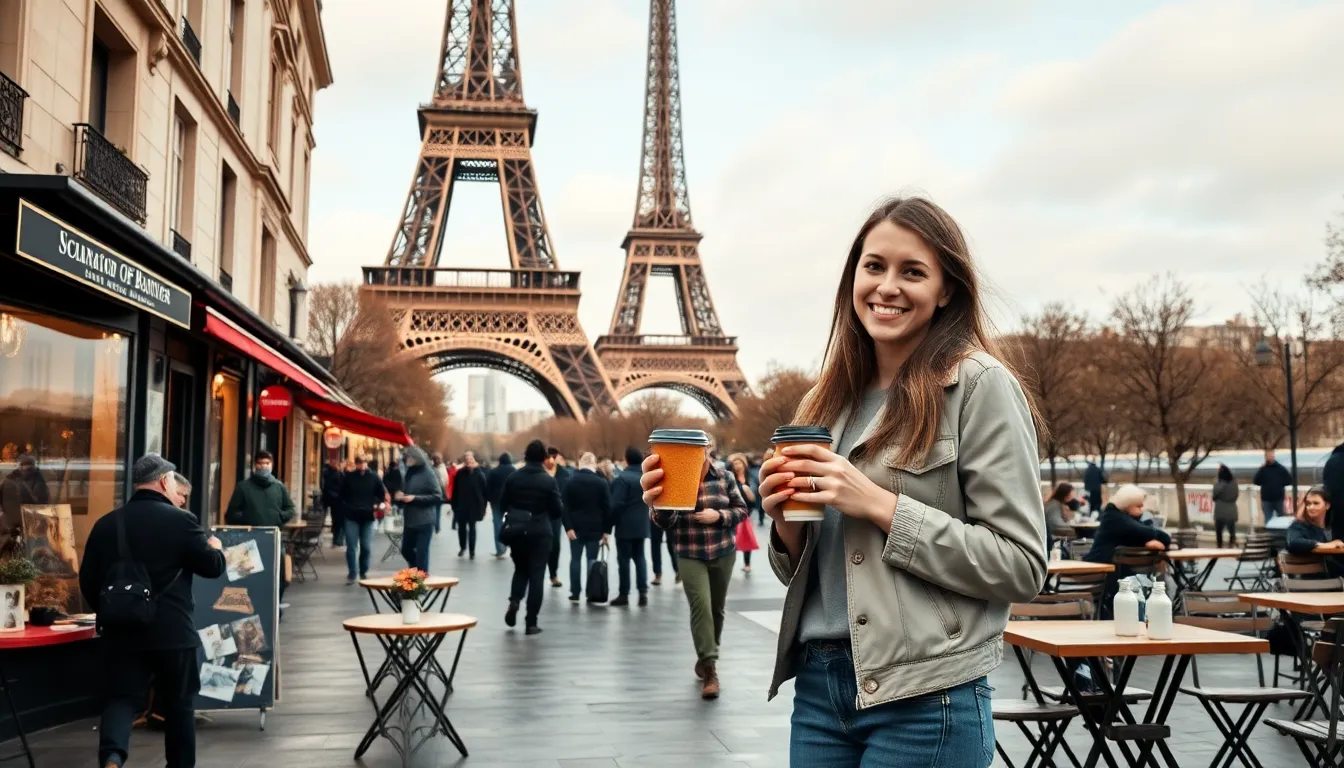Imagine trading your mundane routine for a whirlwind adventure through vibrant streets packed with history, art, and mouthwatering cuisine. Cultural city breaks are the perfect antidote to the daily grind, offering a chance to immerse oneself in the unique tapestry of a new destination. Whether it’s wandering through ancient ruins or sipping espresso in a bustling café, these mini-getaways promise unforgettable experiences.
Table of Contents
ToggleOverview of Cultural City Breaks
Cultural city breaks offer travelers a unique way to experience new destinations in a short amount of time. Exploring historical sites, indulging in local cuisines, and engaging with vibrant artistic scenes form the core of these trips. Immersion in local culture becomes the primary focus, allowing visitors to discover authentic experiences.
Cities like Paris, Rome, and Barcelona attract tourists with their rich histories and dynamic atmospheres. Charts reveal traveler preferences, with 55% indicating a desire to explore cultural attractions during city breaks. Galleries and museums often serve as must-visit points, featuring renowned artworks that reflect the city’s heritage.
Street art frequently showcases the contemporary artistic expression found in urban environments. Notable neighborhoods brimming with creativity attract art enthusiasts, providing insights into local talent. Cafés play a vital role as social hubs, where travelers can relax and absorb the city’s vibe while interacting with locals.
Travel itineraries often include walking tours, which allow exploration of neighborhoods and hidden gems. Engaging with local storytellers adds depth and context to the experience. Special events, like festivals or markets, further enhance the cultural richness of these breaks.
Sustainability remains a key consideration for many travelers. Choosing eco-friendly accommodations and supporting local businesses reflect a growing trend in responsible tourism. City breaks not only promote relaxation but also foster appreciation for diverse cultures and traditions, enriching the travel experience.
Popular Destinations for Cultural City Breaks

Cultural city breaks draw travelers to vibrant locales rich in history and art. Numerous destinations offer a wealth of experiences to explore.
Europe
Paris remains a top destination for cultural enthusiasts. Iconic landmarks like the Eiffel Tower and artistic gems in the Louvre reflect France’s artistic legacy. Rome attracts visitors with its ancient ruins, including the Colosseum and the Roman Forum, showcasing Italy’s historical depth. Barcelona’s unique architecture, especially Antoni Gaudí’s work like the Sagrada Família, captivates art lovers. Cities like Amsterdam and Vienna also shine, offering museums and galleries that embody their vibrant cultures. In Europe, travelers appreciate the blend of tradition and contemporary artistic flair.
North America
New York City stands out as a hub for cultural city breaks. The Metropolitan Museum of Art and Broadway theaters highlight the city’s diverse artistic scene. San Francisco attracts visitors with its unique blend of cultures and historical sites like Alcatraz Island. Toronto’s multicultural neighborhoods immerse travelers in a fusion of global influences, while Montreal’s rich French heritage adds to its charm. Visitors often explore local food scenes, enjoying dishes that reflect each city’s unique character. North America’s cities deliver a captivating mix of history, culture, and culinary experiences.
Activities to Experience on Cultural City Breaks
Cultural city breaks offer various activities that immerse travelers in unique local experiences. From savoring local cuisine to exploring artistic gems, these activities capture the essence of each destination.
Local Cuisine
Travelers find delight in tasting local cuisine that reflects the cultural identity of a city. Cities like Rome serve delicious pasta dishes, while Barcelona features tapas that invite sharing and conversation. Authentic eateries often provide traditional recipes passed down through generations. Culinary markets also showcase local flavors, offering everything from street food to gourmet treats. Engaging in food tours enhances the experience, allowing travelers to sample multiple dishes and learn about local ingredients. Studies show that 70% of tourists consider food exposure integral to their cultural experience.
Museums and Galleries
Visitors frequently prioritize museums and galleries during their city breaks. Paris, home to the Louvre, attracts art lovers eager to see iconic masterpieces. Cities like Amsterdam boast impressive collections, including the Van Gogh Museum that highlights artistic evolution. Local galleries often showcase contemporary artists, offering a glimpse into current cultural conversations. Participating in gallery events or tours adds depth, allowing travelers to interact with artists and curators. Statistics indicate that 80% of travelers plan cultural activities around museum visits, confirming the value of these enriching spaces.
Tips for Planning a Cultural City Break
Planning a cultural city break involves strategic choices to maximize the experience. Factors like timing and budgeting play significant roles in ensuring a memorable trip.
Best Times to Visit
Spring and fall represent ideal seasons for cultural city breaks. Travelers enjoy milder weather and smaller crowds during these months. For instance, Paris blooms with blossoms in April while Rome hosts cultural events in October. Also, many local festivals occur during spring and fall, giving visitors a chance to engage with local traditions. Accommodations may also offer lower rates outside peak tourist season, enhancing the overall experience.
Budgeting and Costs
Understanding the costs associated with a cultural city break is vital for effective budgeting. Accommodation ranges in price from budget hostels to luxury hotels, catering to various preferences. Many travelers allocate 30% of their budget to lodging while dining out can also vary; street food typically costs less than upscale restaurants. Transportation options like public transit and walking provide economical alternatives for navigating cities. Engaging in free or low-cost activities, such as museum days or city parks, enriches experiences without straining finances. Prioritizing expenses ensures travelers can enjoy the cultural offerings without overspending.
Cultural city breaks provide an enriching escape that combines history, art, and gastronomy. They offer travelers a chance to dive deep into the essence of a destination while creating lasting memories. By exploring iconic landmarks, savoring local cuisines, and engaging with vibrant artistic communities, individuals can experience the heart of a city in just a few days.
With careful planning and a focus on local experiences, these short trips can be both affordable and impactful. Whether it’s wandering through a bustling market or enjoying a quiet moment in a café, the opportunities for connection and discovery are endless. Embracing the culture of a new city not only enhances the travel experience but also fosters a greater appreciation for the world’s diverse heritage.



